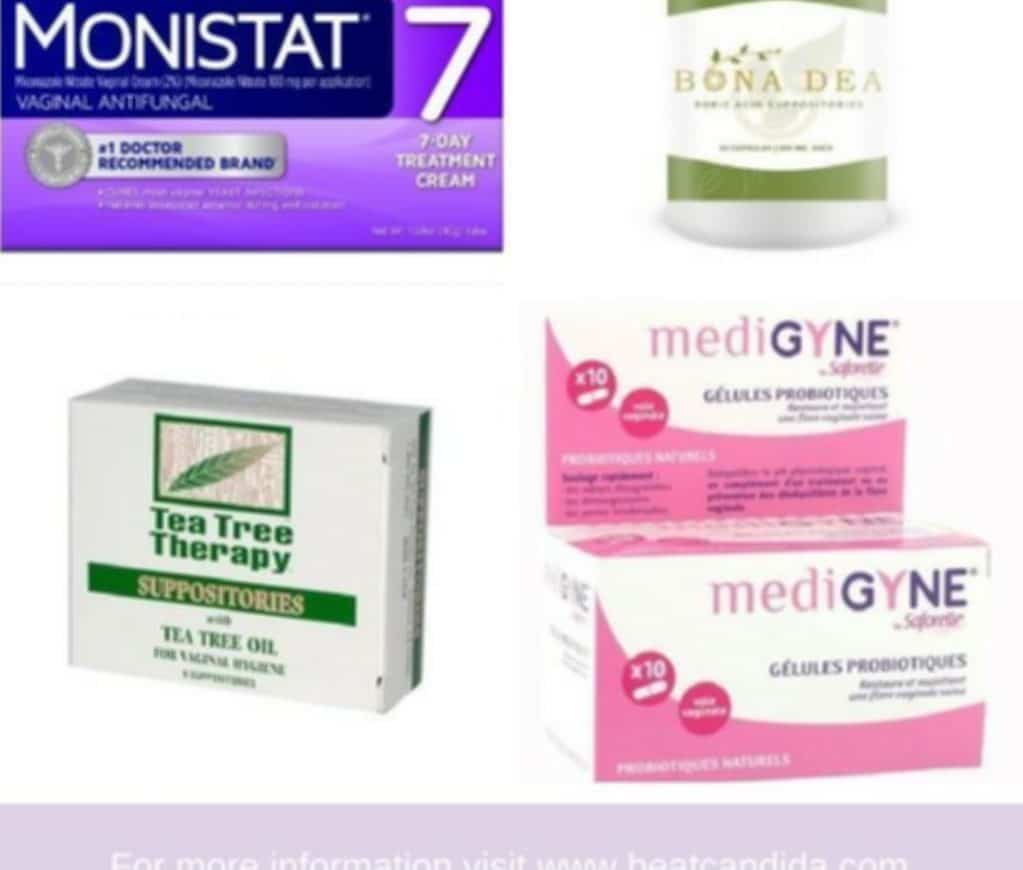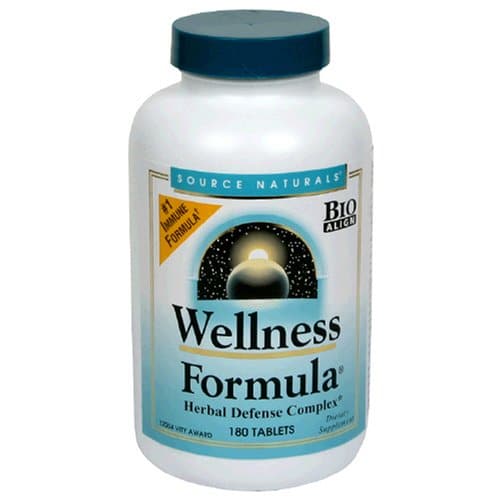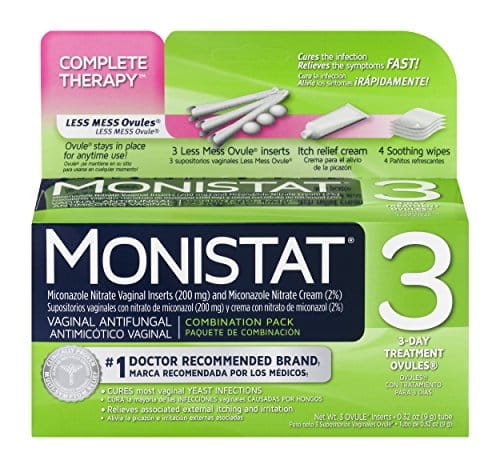Best Probiotic For Yeast Infection
When it comes to the best probiotic for yeast infection, the preference is to use probiotic strains that were shown by research to be effective for candida and yeast infections and also safe with no adverse side effects.
- Bacillus laterosporus is a patented probiotic strain that has shown to be very effective on its own against candida yeast, and is best used during the initial yeast infection treatment, where the preference is to focus on a single probiotic strain that can target candida-yeast very effectively on one hand, but that also does it in a very gentle and safe way.
- Lactobacillus strains are among the most studied probiotic strains, and are best used for preventing yeast infection as well as during the middle of the yeast infection treatment. Most studies combined different types of the Lactobacillus strains together for increased effectiveness, which is considered a common best practice when using the Lactobacillus strains.
- Prebiotics are nondigestible food ingredients known to promote the growth of probiotics by serving as a food source for the probiotics. Supplementing with probiotics may help to initially populate your intestines with good bacteria prebiotics can help this new population of good bacteria to better grow in your intestines.
| Treatment Phase |
- Best product: FloraTrex.
Below is a quick summary of some of the key benefits of Lactobacillus for yeast infection:
Vaginal yeast infection, improve cure rate, relieve discomforts
Prevent Yeast Infection From Antibiotics
If you must take antibiotics, there are a few steps you can do that can help to prevent yeast infection from antibiotics. The protocol below is very simple and has shown to be very helpful for many. Taking antibiotics is known to create a problematic environment in the body where candida yeasts can thrive and overgrow. The steps below can help to mitigate this by helping your body to naturally fight back.
How to prevent yeast infections from antibiotics:
Confirm with your doctor that antibiotics are unnecessary. According to research, at least 30 percent of antibiotics prescribed in the United States are unnecessary . Taking probiotics with antibiotics may help to prevent yeast infections. Make sure you do not have common vitamins and minerals deficiencies needed for a healthy immune system function, especially: Vitamin D, Vitamin B12, Iron. Switch to the candida diet during and after the course of the antibiotics. Pay close attention to foods to avoid that can feed the candida yeast.
Read Also: Urinary Tract Infection How To Treat Without Antibiotics
What Are The Symptoms Of A Yeast Infection
If you are not familiar with the symptoms of a yeast infection, consider yourself lucky as they can be quite uncomfortable. While every woman will experience them in varying degrees, the most common symptoms include:
- A burning sensation around the vaginal area
- An increase in vaginal discharge that may appear white, lumpy and odorless
- Pain or discomfort whilst urinating
- Painful intercourse
Because the above indicators can be related to several issues, it can become difficult for many women to establish whether they are actually suffering from a yeast infection. Often, the same symptoms may be indicative of other ailments such as a urinary tract infection , bacterial vaginosis, or something else. If you find that your treatment for yeast infection is not working, it is best to see your doctor to determine which other factors may be causing your symptoms.
You May Like: Who Is At Risk Of Becoming Infected With Hiv
How To Avoid Yeast Infections While On Antibiotics
There are many steps to take on how to avoid yeast infections on antibiotics.
These steps I will mention and what was proven to work for me can also be useful for those suffer from chronic yeast infections.
Steps to take to avoid yeast infections:
- A daily usage of Probiotic
- Coconut oil applied topically to protect skin barrier.
- Tea tree oil if cuts from scratching arises or fungus growth on skin.
- Boric Acid inserted vaginally. NOT ORALLY
- Switching to organic condoms.
- Switching your laundry detergent to one that is free from chemicals and perfumes.
- A natural gut cleanse.
What Foods To Not Eat While Taking Antibiotics

There are some foods you should avoid while on antibiotics, either because they interfere with absorption or because the combination can make you feel sick.
In most cases, these foods simply interact poorly and make the antibiotics less effective.
Foods to avoid include:
- Grapefruit You should avoid both the fruit and the juice of this sour citrus product. It contains compounds that can keep the body from properly absorbing your antibiotics as well as other medications, too!
- Excess Calcium Some studies show that excess calcium interferes with absorption. For best results, stick to fermented dairy products until you are finished with your antibiotics.
- Alcohol Mixing alcohol and antibiotics can lead to a host of unpleasant side effects. The most common of these are
- Increased nausea
- Heart rate issues. You should avoid alcohol throughout the duration of treatment and for 48 to 72 hours after treatment ends.
Don’t Miss: How To Tell Tooth Infection
Which Antibiotics Cause Yeast Infections
Do all antibiotics cause yeast infections? Its a good questionespecially if there are multiple options available to treat your condition. Broad-spectrum antibiotics are most likely to throw off your bodys natural bacterial balance, such as:
RELATED: Amoxicillin coupons | Imipenem coupons | Tetracycline coupons | Ciprofloxacin coupons
Symptoms Of A Yeast Infection
If you think you are suffering from a vaginal yeast infection, you may experience the following symptoms:
- Pain or discomfort when urinating
Mild yeast infections will go away on their own after a few days.
But in most cases, they will get progressively worse if left untreated.
Speak with your healthcare provider to find the best treatment option for you.
Read Also: Is Yellow Snot A Sinus Infection
Do Probiotic Bacteria Really Repopulate The Gut
You have probably read somewhere that probiotics require a supporting cast of other probiotics so they can attach to the intestinal wall to re-colonize and proliferate, which is true to a point. You may have also read that the probiotic should have FOS to feed these bacteria so they survive.
Well, I have news for you, all conventionally manufactured probiotics for yeast do not have the ability to re-colonize the human intestine. It is lost during the manufacturing process. So when you stop taking them, the benefits are lost after 2 to 3 weeks because they all die. If someone tells you different, they are lying to you! Below is a chart that shows this phenomenon.
With all that said, some might repopulate, we just donât know for sure but this study points out that they usually donât.
I always look at conventional probiotics as a defensive decoy. They do a job while you take them but they also act like a decoy of sorts so the bacteria you do have can repopulate on their own. In some cases, as pointed out in studies of people that have taken broad spectrum antibiotics for two weeks, it can take a year for your bacteria levels to recover.
Now if your missing entire species, you would be surprised how common this is, you should take a probiotic forever or do a fecal matter transplant.
Also, some probiotics donât work for some people but do work for others, it is an individual thing just like doses. You have to find what works the best for you.
How Probiotics Are Good For You
They might lower the number of âbadâ bacteria in your gut that can cause illness or inflammation. They can also replace those problem germs with good or helpful bacteria.
Researchers are studying when and how probiotics might best help. Thereâs more research for some illnesses than others. They might help people with:
- Diarrhea, especially when itâs linked to specific antibiotics. Probiotics also might help with infectious diarrhea, especially in children.
- Inflammatory bowel diseases including Crohnâs disease and ulcerative colitis. Some probiotics might keep ulcerative colitis in remission and prevent Crohnâs disease from relapsing and getting worse.
- Irritable bowel syndrome. Probiotics can sometimes help ease symptoms, including stomach pain, bloating, gas, diarrhea, and constipation.
Probiotics also are being studied for many other conditions. There isnât as much research yet, but some people say that probiotics have helped them with:
- Decreasing inflammation, such as from rheumatoid arthritis
Recommended Reading: Get Prescription For Yeast Infection Online
How To Keep Yeast Infections From Coming Back
All these measures above are great practices on how to keep yeast infections from coming back.
But, it keeps coming back. Now what?
A gut cleanse would be a great option at targeting the root cause of your issues. It has been a great success for me on getting rid of UTIs , Yeast Infections and IBS for me. Treating things on the surface may not be enough.
The Best Probiotic For Candida
If you apply these five tests to probiotic supplements on the market today, youll find very few that pass. Thats why we worked with Balance ONE to design a probiotic supplement that fulfills all of these criteria.
Our recommended probiotic for Candida is the Balance ONE Probiotic. It uses BIO-tract technology, contains 15 billion CFUs of bacteria, has 12 probiotic strains, and is made in the USA. Its the only probiotic that we recommend for Candida overgrowth.
You May Like: Natural Ways To Cure A Tooth Infection
Other Risk Factors That Increase The Chance Of Getting A Yeast Infection
Understanding what can lead to a yeast infection can help you identify when you may need to be seen to have a diagnosis and discussion about treatments to resolve it. So what increases your risks of getting a yeast infection? Attributes that can impact the likelihood of getting a yeast infection include:
- Uncontrolled diabetes
- Hormonal changes due to pregnancy, birth control, and hormone therapy
- A weakened immune system
- Sexual activity
Dont Use Antibiotics Unnecessarily

Try to avoid using antibiotics for minor infections, such as an ear infection. In these cases, antibiotics will only shorten your healing time by a day or two.
Ask your doctor if theres anything else that might help before starting antibiotics.
But if your doctor does recommend taking them, make sure to finish the entire course. Not doing so can contribute to antibiotic resistance, which makes antibiotics ineffective against harmful bacteria.
Don’t Miss: Can Urgent Care Test For Yeast Infection
How Do You Treat Thrush After Taking Antibiotics
Vaginal thrush is an infection caused by an overgrowth of the yeast called Candida albicans. The yeasts are naturally occurring in the body but only in small amounts. Thrush can be really itchy, often causing irritation and vaginal discharge.
How can women get vaginal thrush from antibiotics?
What are other causes of a vaginal yeast infection?
-
High alcohol intake
Symptoms of vaginal thrush include the following:
-
Redness and swelling
-
White discharge that is thick and cottage-cheese like in appearance
-
Burning sensation while urinating
It is easy to mistake the symptoms of vaginal thrush as that of bacterial vaginosis. Others may think of it as signs of STI. However, these are completely different medical conditions.
Thrush can affect womens health if not treated properly. This is why it is important to get a diagnosis by a doctor.
Other Options For Yeast Infection Treatment
Especially if its your first time experiencing symptoms, speak to a gynecologist or healthcare provider to determine whether you have a yeast infection before you try any type of treatment. Many of the symptoms of a yeast infection can also occur with other types of vaginitis, and you want to be sure you use the best treatment for your condition.
Effective treatments for a yeast infection include:
- Prescription antifungal medication: These creams, ointments, pills, and suppositories come in one-day, three-day, and seven-day strengths. Note that pregnant women should not take single doses of oral medication such as fluconazole .
- OTC treatments: Over-the-counter vaginal creams and suppositories, such as miconazole , also come in one-day, three-day, and seven-day strengths. These products often have the same ingredients as prescription medications but in less concentrated amounts.
Also Check: Bladder Infection Antibiotics Not Working
Ways To Prevent A Yeast Infection That Every Woman Should Know
Causes of yeast infection
- Changes in hormonal level during your menstrual cycle
- Antibiotics and other drugs
- A weak immune system
A yeast infection is not an STD but it can still spread through sexual contact. The infection can also spread through the mouth, throat and tongue- this is commonly known as thrush.
Contracting a yeast infection can be unpleasant, but avoiding the infection is simple once you have the basics down. All it takes is a few simple changes to your daily routine and habits. Here are five easy ways to ensure that you dont get a yeast infection:
Probiotics are the good bacteria that are important for a healthy immune system. Eating foods that are rich in probiotics is great for your digestive system as they have the ability to prevent yeast infections. Yoghurt is an excellent probiotic food that contains Lactobacillus acidophilus. This is good bacteria that helps you maintain a healthy pH value and encourages the growth of a beneficial microbiome in your body.
While there is no conclusive evidence that eating yoghurt prevents yeast infections, it is great for maintaining overall vaginal health. It is recommended to eat a small cup of unsweetened yoghurt every day to give your body a boost of extra-good bacteria. Its important that you dont eat yoghurt that has added sugar because this can actually encourage candida growth.
Alternate Diagnoses And Treatment Options For Yeast Infections
Some functional and alternative health practitioners believe that candida goes beyond acute infections or rare invasive conditions. They believe that many individuals have chronic candida, perhaps without knowing it. The theory is that chronic yeast overgrowth leads to a vast array of symptoms and illnesses, including fatigue, leaky gut syndrome, and even depression. While modern Western medicine largely dismisses this theory, the idea has become popularized, specifically among people whose health conditions are not attributable to other diagnoses.
You May Like: Z Pack Vs Amoxicillin For Sinus Infection
Who Is At Higher Risk Of Developing A Yeast Infection
Any woman at any age can get a yeast infection and most will experience at least one in their lifetime, but it is more than likely to occur in women after puberty and before menopause.
Another risk factor is having higher estrogen levels.
You may have higher estrogen levels if you are pregnant, taking high-dose estrogen birth control pills, or undergoing estrogen hormone therapy.
Diabetes or a weakened immune system can also put you at an increased risk for yeast infections.
Our physicians can prescribe antibiotics for various conditions, but only if necessary. Chat with a provider to see which treatment option is best for you.
Does My Sexual Partner Need To Be Treated If I Have A Vaginal Yeast Infection
A note from Cleveland Clinic
Yeast infections are a very common fungal infection that most women or people assigned female at birth will have in their lifetime. Its highly treatable with medication, some of which are available to purchase at your local drug store without a prescription. Even though you may know the signs of a vaginal yeast infection, its important to get examined by your healthcare provider. They can recommend the best treatment based on the type of yeast infection you have and its severity.
Last reviewed by a Cleveland Clinic medical professional on 09/02/2022.
References
Read Also: Can Mirena Iud Cause Yeast Infections
Can You Take Fluconazole While Taking Antibiotics
- Asked
- infections, sinusitis, fluconazole, doctor, prescription, antibiotics, sinus, yeast infection, diagnosis
I recently got diagnosed with a bad sinus infection and was prescribed a 10 day course of antibiotics. My Doctor told me that she was going to also prescribe me something for a yeast infection just in case. She said that if I started to feel itchy down there to take the fluconazole pill that she prescribed. Im confused about exactly when to take the pill. I am actually starting to feel a little itchy down there but should I take the fluconazole pill while Im still on the antibiotics?
Tips To Prevent Yeast Infection From Antibiotics

Antibiotics have a lot of uses. They treat dangerous bacterial infections, and the benefits far outweigh the risks. But it is possible to prevent some of the side effects, including yeast infection, by:
And, if your doctor prescribes an antibiotic, be sure to ask about prevention and treatment options, such as Diflucan and Monistat.
Read Also: Best Abx For Ear Infection
Should I See A Doctor
If your yeast infection doesnt improve after treatment, you should consult your doctor. OTC antifungal creams can take up to 10 days to treat a yeast infection.
You should make an appointment if you get recurrent yeast infections, which refers to having four or more yeast infections a year. These usually require prescription treatment because yogurt and other home remedies arent effective for this type of yeast infection.
If youre still having symptoms after this point, you could have a different condition, such as bacterial vaginosis. This is a bacterial infection with symptoms very similar to those of a yeast infection. But because its not caused by a fungus, it wont respond to antifungal treatments.